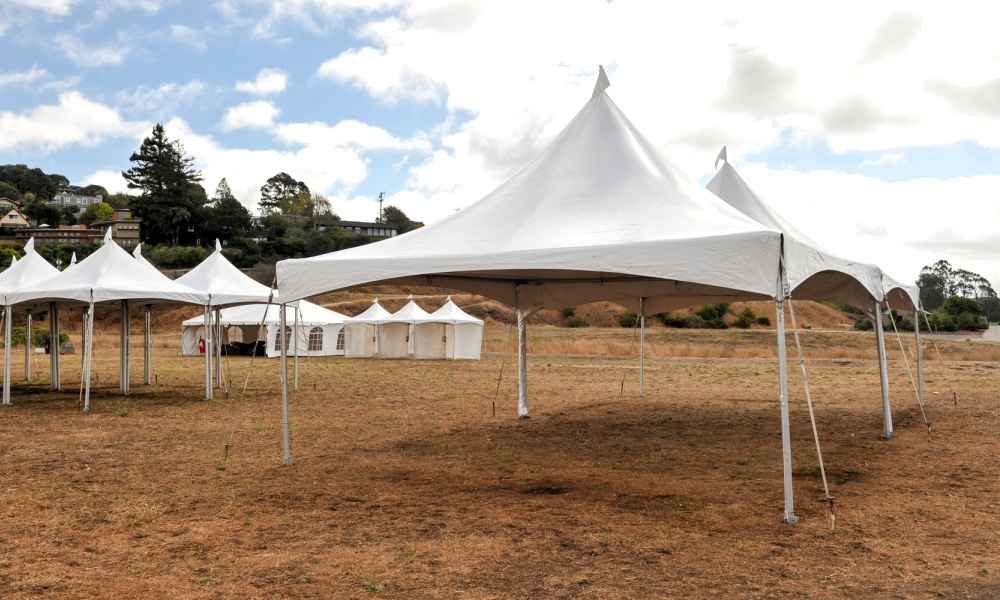How to Weigh Down a Pop-up Canopy
Top Gutter Guard is reader-supported. When you buy through links on our site, we may earn an affiliate commission.
When setting up a pop-up canopy tent, it is often difficult to keep it in place, especially if you set it up on a windy day. Canopy tents can easily fly away in a slight breeze, especially if you install your canopy tents with side walls, due to their material and design. In order to avoid this problem, it is important you weigh down the tent’s foundations with the help of tent weights.
Tent weights, as the name implies, are accessories used to weigh down a tent. They can be used on any surface and in any condition, and can be quite heavy to transport around. The ideal tent weights can weigh around 40 pounds; but this can change depending on the type of pop-up canopy tent you have, and what event you are hosting.
Since they are very heavy, setting them up can be difficult, and sometimes it will take a lot of space within your tent. However, due to their weight and effectiveness, it is the most preferred way to ensure your tent won’t come crashing down due to wind or movement.
If you want to buy tent weights for your pop-up canopy, there are several types available on the market which you can choose from. It is notable that they vary on how they can be secured to your tent’s base legs.
The first type of tent weights is the secured tent weight, which you attach to the base of each tent leg to hold it down. The second type of tent weight is the suspended tent weight, where the weights hang from the critical sides of your tent to hold it in place. For some events, organizers recommend the use of suspended tent weights to weigh down the tent as these weights do not waste too much floor space.
Another type of tent weights are the fillable weights which can be filled with either sand or water. After your activity or event, you can easily remove the sand or water from these weights, and easily store them until you next need them. Finally, weight plates are another type of tent weights to consider. Weight plates can also be secured to the base of the tent and do not take up too much floor space.
Some companies offer specialized tent weights that work well with their tents. If you own such a pop-up canopy tent from companies like Caravan, King Canopy and EZ Up, you do not need to buy tent weights.
If you want to save money, making your own tent weights can easily be done at home with materials you can find in your shed or workshop. Here are some examples of tent weights you can make at home:
- PVC pipe weights: Use 4 or more pieces of 3-4” PVC pipes and fill them with concrete. When making PVC pipe weights, the weights can vary depending on how heavy you want the pipe to be, and what type of canopy tent you have. Once the PVC pipes are filled with the amount of concrete you want, you can secure each end with PVC end caps. Since PVC pipes are available in various colors, you can easily make one for your tent’s color.
- Large buckets: As the name implies, you can use large buckets and fill them with the right amount of sand or water to serve as tent weights. If you are using water to fill the bucket, using 5 gallons of water converts to 40 pounds of weight. For sand, you will need 3.2 gallons of sand to make it weigh up to 40 pounds. Since you can fill it on site, you don’t need to transport the weight with you; just fill the buckets when setting up. Unfortunately, using buckets can be less attractive due to their designs, and if you use these for events, you will probably want to cover them up.
- Large jugs filled with stones: Stones are also perfect for serving as alternative tent weights. Fill jugs with stones or rocks to the amount you want and close them tight. You can either suspend these jugs in critical areas of the tent or just secure them around the tent’s base.

